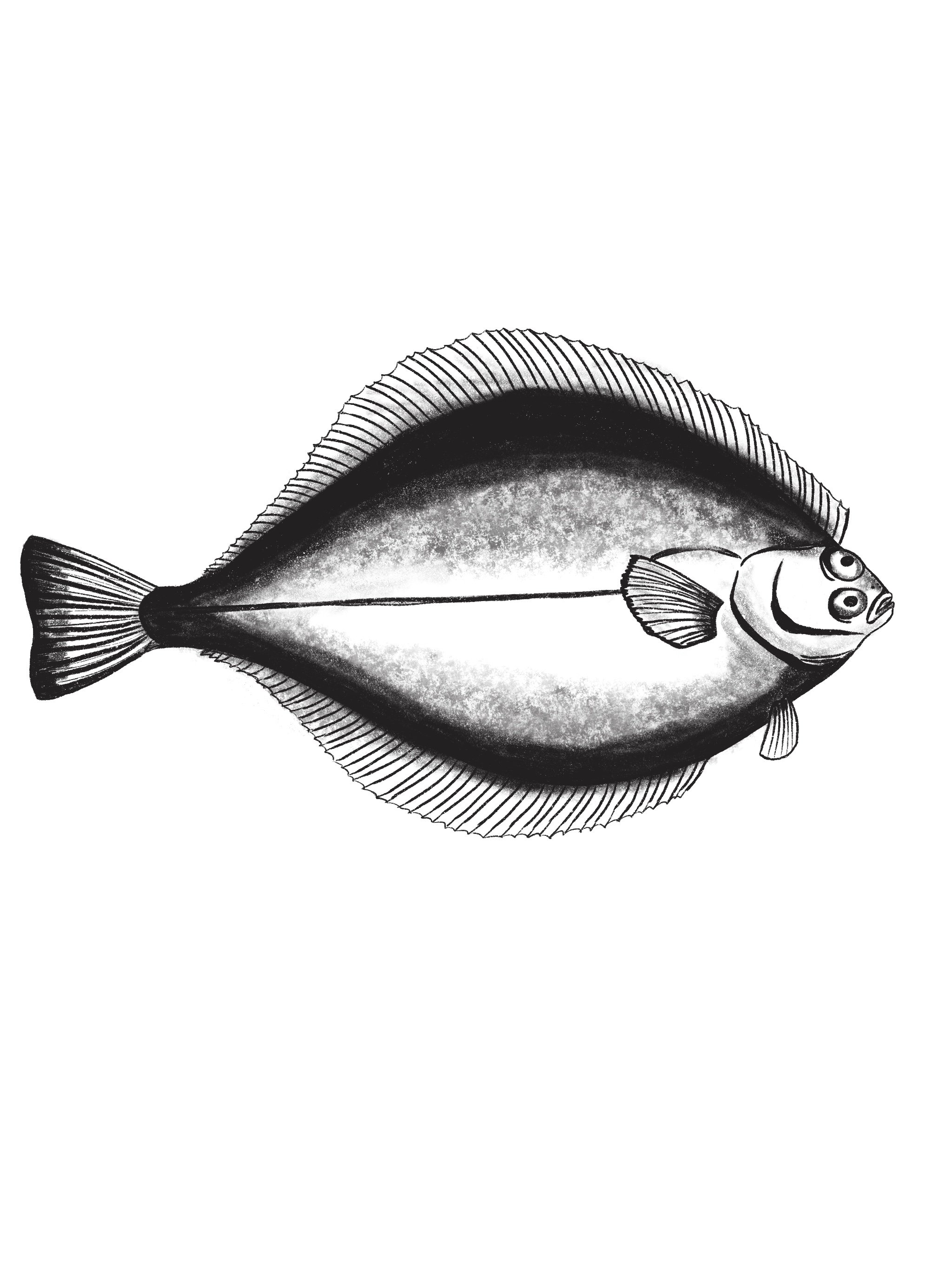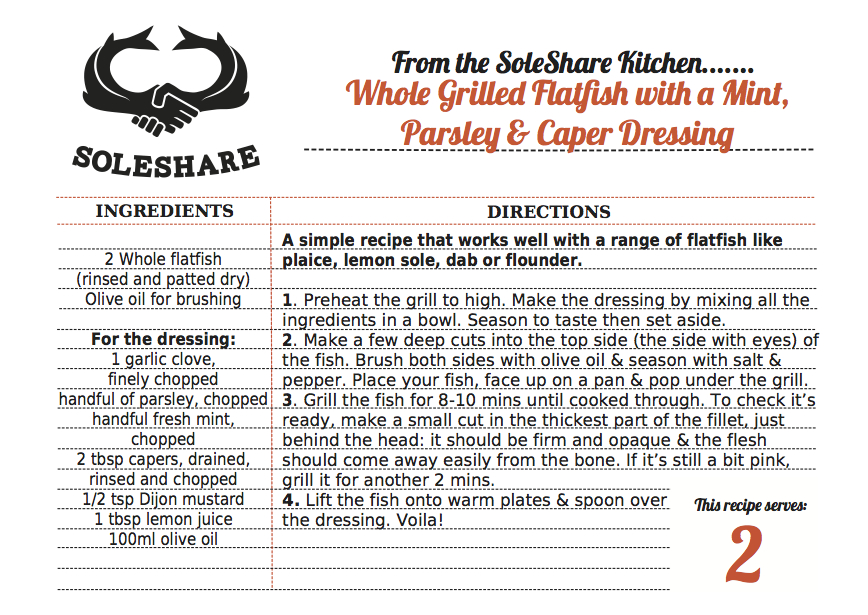
Dab
Home | Fish & Recipes | Dab
Illustrations by Lucie Galand https://www.lalalu.org/
Limanda limanda
Biology
Dabs are found in large numbers in the waters of the Channel. They rarely grow above 25cm and have a sandy coloured skin that’s rough to the touch, often with orange fins.
Not being very sought after fish, there’s been very little research into them, but they’re hardy little guys found in brackish estuaries, to deeper waters way offshore.
Unlike most flatfish, which lie in wait for their prey, attacking from below, the dab curls its head and body directly over the holes inhabited by little invertebrates, waiting for them to pop out and get munched.
Fishing
Dabs are generalists and as such are plentiful. They’re not targeted by any fisheries due to the low prices they command on the dock, but are often caught as bycatch in plaice and sole fisheries.
Eating
Poor little dabs. Their diminutive size makes them the but of many a joke, but as Alan Davidson says in his book, North Atlantic Seafood: ‘dab are good fish, with a pleasing flavour’. They really are. Their only problem is their size and it's why restaurants won’t touch them. We’d happily sit down to a two fish dinner.
They have a sweetness that is seen only in the freshest of plaice and a tray full of baked dabs is a great centrepiece if you’ve got a few people over.
They’ll certainly need scaling and trimming, but the skin crisps up very nicely in the frying pan and roasting four whole with some veg is a genuinely excellent meal.
You can easily use dab in any lemon sole recipe (we’ve even seen them advertised as lemon sole on more disreputable monger’s slabs).






